Mark this year, 2022, has when the multiverse concept expanded beyond comics and comic book movies for the general public. The Michelle Yeoh film "Everything Everywhere All at Once" turned the concept into a fresh film experience. "Sonic Prime" on Netflix will make Sonic dimension-hop to stop his nemesis, Dr. Eggman. Games have explored this concept for quite some time, and Trinity Fusion isn't the latest. It is, however, a game that seems determined to mash up a number of ideas and concepts to create something that warrants some attention.
Since this is a closed beta build, Trinity Fusion doesn't spend much time trying to explain things. You choose one of three characters and try to get as far as you can. Once you inevitably die, you select a character again and get transported into a hub tower, where you learn that you're one of three different versions of the same person, each stuck in their own world and trying to save it from doom. With a threat to all universes at hand, it is up to the trio to solve each reality so that total collapse never occurs.
As alluded to earlier, the core gameplay seems to be influenced by several different things, and the first is Metroid. You may not spend your time backtracking to previously locked-out areas of the map, but you have a map that starts to fill in as you explore. It's also a side-scroller, and you can't help but think of the influential series the moment you see the camera zoom levels and mix of horizontal and vertical exploration.
The combat, however, resembles Dark Souls and its ilk. Dodging attacks and reading tells becomes important, and the game helps you out by ensuring you notice that the enemies have their eyes flash red before striking. However, enemies hit hard, so a careless battle can knock you from full health to one-third of a bar, so punishment is harsh. The combat will also remind you of Devil May Cry, as you'll be able to unleash a number of basic combos on enemies. Depending on who you play as, you'll either mix things up with projectiles or two types of melee weapons, and the fighting rarely slows down, forcing you to constantly think on your feet.
The multiverse part of the game is not only reflected in the three characters you control but also the levels you encounter, all of which are chosen depending on who you play as. Pick Altara, and you're going around caverns in a postapocalyptic setting. Naira spends her time in the sky cities, which are filled with robots, and Kera explores an endless series of forges. For the most part, there are only a few distinct enemies in each world, so you'll see a number of familiar foes no matter which place you pick, but the areas are distinct enough that they don't feel like reskins of one another.
All of this is wrapped up in the familiar trappings of a modern roguelike. You'll always start at the beginning of the level after every death. You'll get temporary buffs throughout a run, but the only thing you'll keep between runs is one currency type, which can be used to buy more permanent upgrades that are good for all three characters. The inclusion of three different starting worlds ensures that runthroughs have more variety, but levels will always get randomized layouts, per genre tradition. What sets apart Trinity Fusion thus far is that each run means different starting weapons. For example, one run might see Altara start with a basic sword and fireballs, while another run has her starting with a scythe and bouncing electricity. It's an interesting wrinkle to the formula that works well for those who've played a number of roguelikes and want to see something new.
So far, the only thing we're not really seeing is how different the heroines are. They have a few different abilities. Kera has a tether that can pull in enemies to get in some hits while they're stunned. Altara has a drone that can be used to scout the area around her and warp her to a new section. Naira is the only one who can use firearms. In combat, all of them have a slashing attack and use mostly the same weapons, so it takes a while before you remember that they do a few things differently. There's still plenty of development time for tweaks to make their play styles immediately stand out.
The overall presentation is quite good. The backgrounds of each stage are well rendered, no matter which level you're in, and all of the characters and enemies look and animate just as well. The amount of particle effects on display aren't exactly numerous, but the high frame rate more than makes up for it. Meanwhile, the music fits in with the action quite well. It's a little disappointing to not hear any voices yet, but cut scenes aren't prevalent, either, so it's likely that the audio is still in progress.
Although the game is currently in a limited closed beta period, Steam Deck owners will be comforted by the fact that the current build runs quite nicely on that device. Even though there are no graphical options to change, the game runs at a full resolution on the device and hits 60fps fairly steadily. Load times are swift, and a full battery provides around four hours of gameplay. In short, you can run it on the portable on day one without needing to think about cutting back anything to make it run.
Trinity Fusion is an interesting title. The lengths it goes for randomization is surprising, but the level variety creates a roguelike that takes longer before things repeat. The action is well done, even if it can feel harsh at times, and the constant changes makes things feel fresher for a longer period of time. There's still a long way to go before it reaches a full release, but for now, we'll be keeping an eye on this title.
More articles about Trinity Fusion



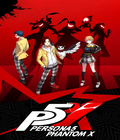
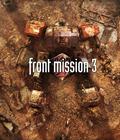


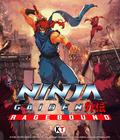

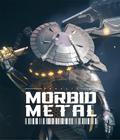

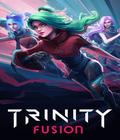 Trinity Fusion is a action/roguelite platformer where you explore dark, sci-fi worlds and engage in fast-paced, smooth and precise combat.
Trinity Fusion is a action/roguelite platformer where you explore dark, sci-fi worlds and engage in fast-paced, smooth and precise combat.



